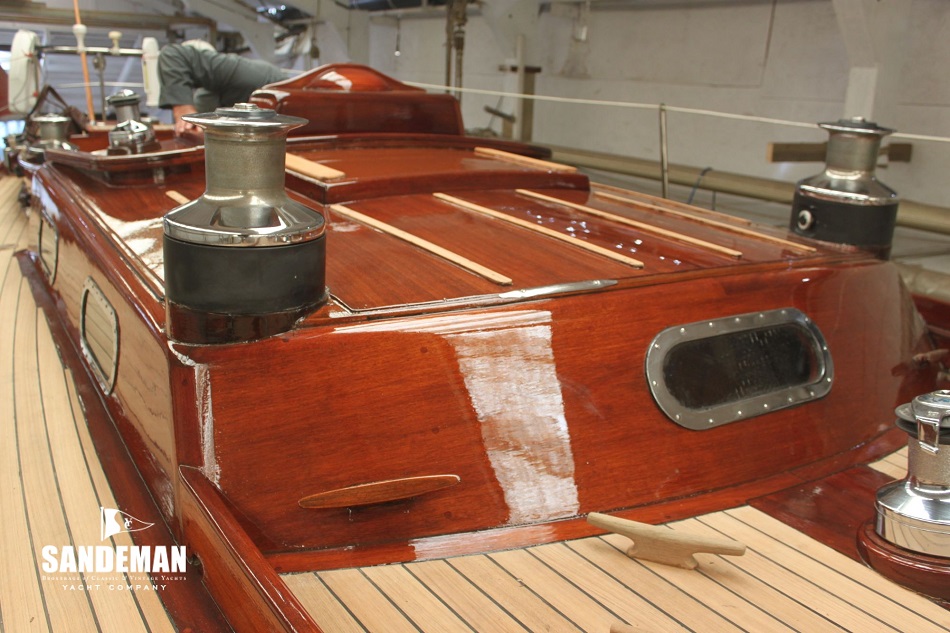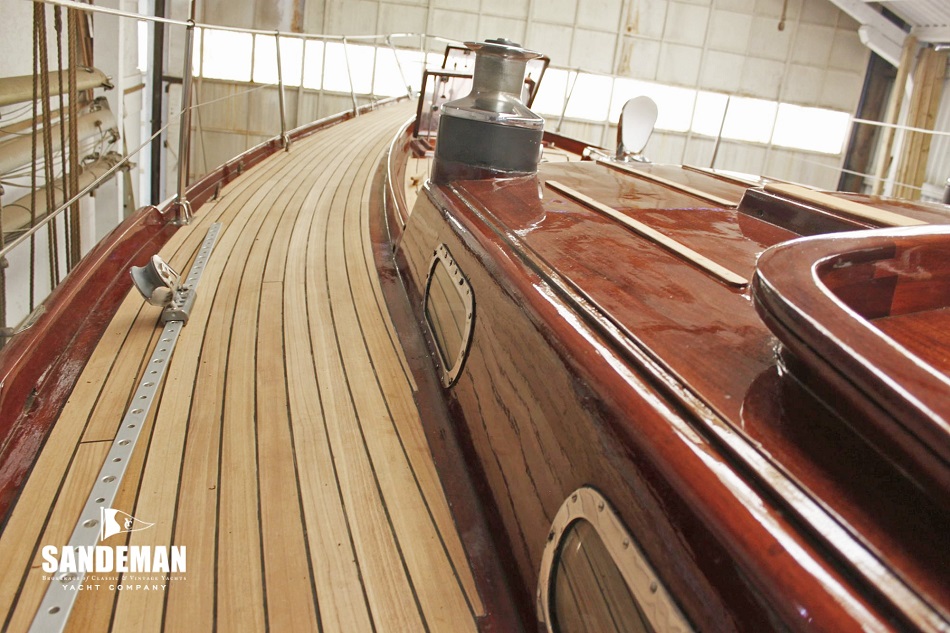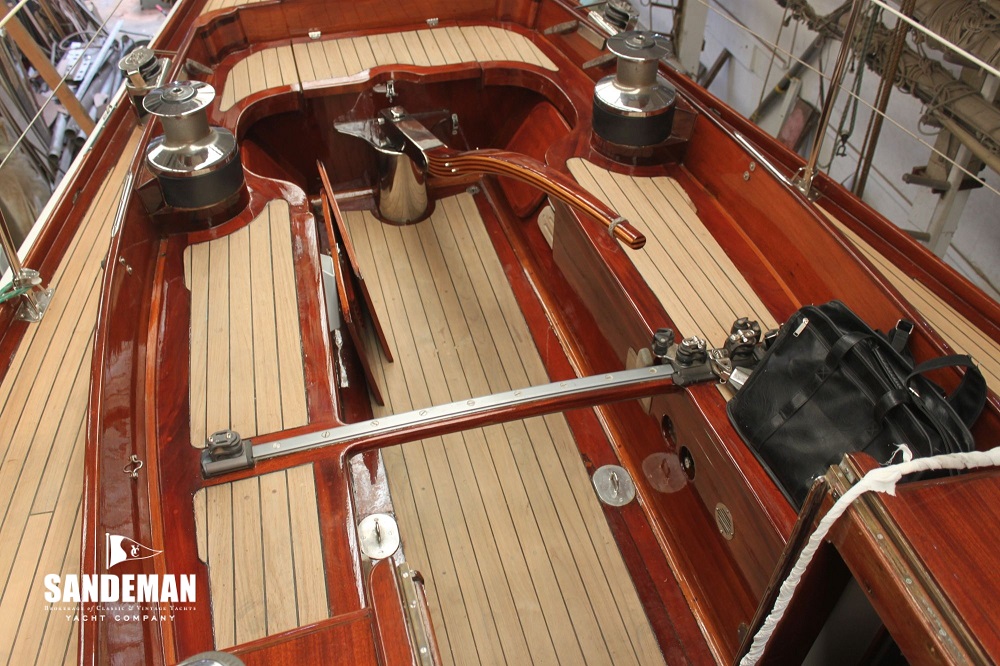–

Classic Yacht Under Sail
1900’s America’s Cup Defender ” Yacht Columbia”

Shamrock V Racing via marsemfim

J Class Lionheart Sailboat Onboard

J Class Yacht “Lionheart”

J Class Wooden Yacht Model Replica “Lionheart”

1937 America’s Cup J Yacht Ranger Wooden Sailboat Model
The J-class yacht Ranger won the 1937 America’s Cup, defeating 4-0 the Endeavour II of Britain, raced at Newport, Rhode Island. It would be the last time huge J-class yachts would race in the America’s Cup.

Vintage Photo Shamrock V off Rhode Island J Yacht, America’s Cup

1895 Yacht Iverna at Full Sail
In 1890, Iverna represented a new design of great racing cutter – a handsome yacht with her distinctive fiddle or cutter bow and undercut stern. Commissioned by John Jameson (of the Irish whisky family), designed by Alexander Richardson and built by J G Fay in Southampton, she was 98ft. in length – 118ft. with her bowsprit – with a beam of 18ft. and a sail area of 8157 sq. ft.

J Class Yachts Rainbow and Vesheda Under Sails source

Shamrock V Yacht via jclassyachts
Shamrock was originally owned by Sir Thomas Lipton, the owner of the English grocery chain ‘LIPTON’, and famous for his import of Lipton Tea from India.
Shamrock V was built in 1930 for Sir Thomas’s fifth and last America’s Cup challenge. Designed by Nicholson, she was the first British yacht to be built to the new J Class Rule and is the only remaining J to have been built in wood. After launch she was continually upgraded with changes to hull shape and rudder. The rig was also modified to create the most effective racing sail plan but she was no match for the faster US design “Enterprise”.
Sir Thomas made all five of his America’s Cup challenges as a member of Royal Ulster Yacht Club, a club that continues to this day to have a strong involvement with The Cup.
Shamrock V was sold in 1933 to Sir Richard Fairey (Fairey Aviation) who again was a keen yachtsman who campaigned it in company of two new steel J’s built during 1933 – 1934, Velsheda and Endeavour. After World War II, Italian owner Mario Crespi installed the elegant bird’s-eye maple interior.

America’s Cup Shamrock Wooden Sailboat Model

Sails and Rigging Wooden Mast

1934 J-Class Yacht Rainbow Model

J Class Yacht Velsheda Model
Designed by Charles Nicholson and built by Camper & Nicholson in 1933 for Mr W.L. Stephenson, Owner of Woolworth chain of shops, she was built in 1933 at Gosport. She was Nicholson’s second design for a J Class and Stephenson’s second big yacht.
“Velsheda” was named after Stephenson’s three daughters, Velma, Sheila and Daphne. She raced with the greatest names in classic yachting including “Britannia”, “Endeavour” and “Shamrock” between 1933 and 1936.
In her second season she won more than 40 races and achieved an outstanding record of success at Regatta’s from Southend to Dartmouth. Other venues included Torbay, Swanage and of course the Solent, all under the control of the very famous Captain Mountfield.
The permanent racing crew at that time was probably around 16 men and this would have been augmented to around 30 for racing. When not required for sail changes, spare crew were moved to below decks.

1966 Queen Elizabeth with birthday gift for Prince Andrew age 6. Sailboat was a gift via flickriver

J Class Yacht Velsheda via source

 Enterprise Decorative Sailboat Model
Enterprise Decorative Sailboat Model

Schooner Atlantic source

On the Deck at the Helm photo by Terry Hilbert

Atlantic Schooner Ship Model
Commissioned by New York Yacht Club member Wilson Marshall, the Atlantic was launched in 1903. William Gardner, one of America’s foremost designers of large yachts, designed her. From the moment Atlantic went to sea, it was clear that she was an exceptionally fast and beautiful schooner. When a yacht in 1903 hits twenty knots during her sea trials, she is a promising yacht, but even then nobody could imagine two years later this yacht would set a record that would stand unmatched for almost a century.

Sailing Yacht Atlantic – Photo credit to Kees Stuip

1934 America’s Cup Race Yacht Rainbow source

J Class Yacht Endeavour via jclassyachts
Endeavour was commissioned by Sir T.O.M. Sopwith to challenge for the America’s Cup in 1934. Having prepared his campaign in Shamrock V, Sopwith was keen to ensure that this yacht was the most advanced design possible. With his experience designing aircraft Sopwith applied aviation technology to Endeavour’s rig and winches and spared nothing to make her the finest vessel of her day. From launching in 1934 she continued her preparation by competing against Shamrock V (then owned by Sir Richard Fairey) and the newly launched Velsheda (owned by W.L Stephenson).

The Yacht Magic

America’s Cup Rainbow Yacht Model

Yacht Rainbow via yachtworld

Olympic Class Racer Dragon Model Ship

Vanderbilt at helm of RAINBOW, New York Yacht Club Cruise,1934 source mysticseaport

Concours Racing

Bluenose Schooner source

Bluenose Schooner Model Ship

Classic Yacht on the Deck

Classic Sailing Yacht

Classic Yacht J Class Endeavour photo Yoshi Yabe

America’s Cup Sailboat Endeavour Fully Assembled Model Ship



SPARKMAN & STEPHENS 40 FT SLOOP 1964 source

Sailing Schooner Under Sail source

Sailboat Love this Rigging source


Windjammer Schooner Heritage of Main schoonerheritage
the coast of Maine has been the foundation of the schooner’s design

Luxury Sailing Yacht SY Huckleberry source

Classic Sailing Yacht source



